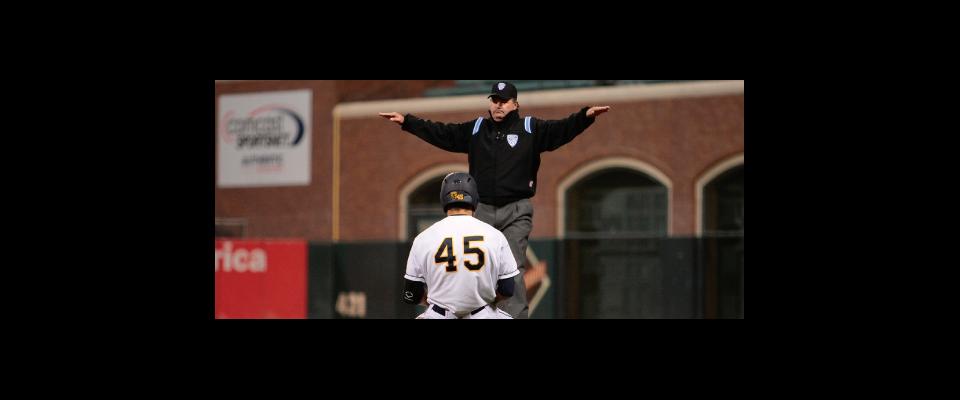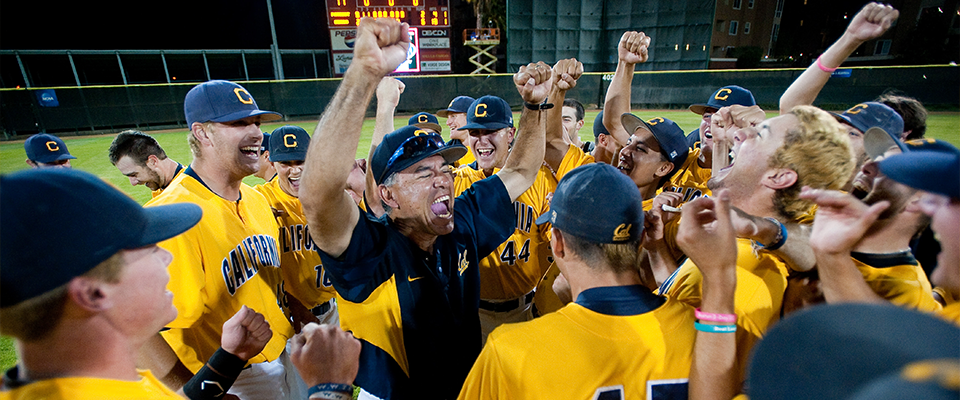California Magazine: To start, maybe you can rewind the tape and tell me how you first learned that your team was being cut.
Theresa Sherry: Well, we knew that as of this spring everything was on the table in terms of cutting sports, laying people off. You know, they have prettier words for it—”scope reduction” and “personnel reduction”—whatever. We weren’t arrogant enough to think that our program was untouchable, so before the announcements came out I sent a presentation to our administration just kind of showing the growth of lacrosse as a sport. It’s the fastest growing sport in the country and there’s actually a huge business that could be made out of marketing our program a little bit better and you know we were just about to turn the corner as a program with the recruits that we’ve had. Obviously, we’re a young program, but our sport is definitely on the upswing. So, anyway, I first found out that we were one of the five the Tuesday morning that the announcement came out. It was shocking. Shocking and disappointing I would say.
CM: When you say lacrosse is the fastest growing sport, are you talking specifically about women’s lacrosse?
TS: Men’s and women’s is the fast growing sport when you put them together. Women’s is the second fastest after women’s water polo.
CM: And so, what’s the status of women’s lacrosse in the west. I know you guys don’t compete in the Pac-10, but how many schools in the Pac-10 field teams?
TS: Currently three: Cal, Stanford, and Oregon. San Diego State is going Division I next year and then the other California schools that have lacrosse are Fresno State, St. Mary’s, and UC Davis. All of those are in the Mountain Pacific Sports Federation along with Denver.
CM: So who’s the toughest competition in the west?
TS: Stanford. They’ve won the last couple conference championships.
CM: Given the upswing in the sport’s popularity, do you have a sense of why your team was vulnerable?
TS: I have the sense that maybe it’s because we’re the new kids on the block. The sport has only been here for like 12 years and other than that, it doesn’t make sense to me financially because we have a very low operating budget. You know we only have three scholarships. I only have one and a half assistants. My second assistant is paid below minimum wage, so she’s technically part-time. We have not been shown what our indirect costs are, so I only know what are direct costs are which is $435,000 including scholarships. You take those three scholarships away and it’s only about $280,000 or so. They said that to endow just women’s lacrosse would be seven million dollars. So what we’re trying to do is work with baseball and women’s gymnastics and the other sports to see if we can work this out through fundraising, but it’s definitely a steep hill to climb.
CM: Has the athletic department signaled that this is a possibility?
TS: Just slight glimmers of hope I would say. They have said that if we come up with the money than we can work it out. Basically the solution is a matter fundraising. A lot of questions our current players and their families have are just about not having the chance to fundraise to prevent this from happening, because obviously our program takes a hit in recruiting and in a lot of other ways even if we do bring it back. We’ve had to release all of our verbal commitments and a lot of our girls on the current team are already looking to transfer because their situation isn’t certain here.
CM: And yourself? What position are you in, career-wise?
TS: Well, most of the jobs come open in May or June after the lacrosse season is over so I’m going to wait till then. I also run a club team and camp business out here in the Bay Area for sixth- through twelfth-graders and we’ve got about 200 girls that we’ve really worked on developing and I’m very tightly connected to the community there, so that could be another potential way to stay in the Bay Area.
CM: Some people assume that when a team is cut from varsity it automatically becomes a club. Is that the case, and what would it mean for you team to assume club status?
TS: Well I wouldn’t be the coach, there’s not a full time coach for that. And then there’s a club rule for women’s lacrosse that if you’ve played a Division I game, you cannot play at the WDIA level, which is the club tier. We’ve been informed of a waiver process so that those student-athletes who are staying here can have the option of playing club if they would like, but again I think it will be split as far as who will actually do that and who will not.
CM: And I’m assuming the clubs are completely self-supporting and are not covered at all by the University?
TS: No, not at all. The girls actually have to pay to play. And, already, you know we bring in a million dollars to the University every year because so many of our girls are from out of state, so we still make money for the campus as far as tuition goes. That’s another thing: I don’t know if families will want to shell out even more, and that’s why a lot of our girls are looking to transfer. You know, they will continue to get their scholarship money for the four years that they’re here, but it’s so little for most of our girls that it’s not really worth it and they’re not going to have all of the academic benefits that they had before as student-athletes.
CM: So am I correct in thinking you’re not giving three full scholarships; you’re spreading it out?
TS: Yeah, we spread it out through the 30 players. It’s just a couple thousand dollars per person, so that’s not going to be enough to keep people here.
CM: Have you been happy at Cal?
TS: Yeah, I would say it was an exciting time for Cal Lacrosse and west coast lacrosse in general because of the explosion of the sport’s popularity. I think it has been increasingly tough with the budget situation and the recession because there has been a lot of tension between the academic community and the athletics community. I have not enjoyed that. But I have really enjoyed the young women that I’ve worked with and my coaching staff and I really did believe in the University because having gone to Princeton, I liked that Cal was about excelling in the classroom and on the field.
CM: You mentioned the faculty tension. Did you get involved in that at all personally?
TS: No, I did not, except for reading the papers and hearing the stuff that our girls were exposed to in class. Let’s just say I’m not a fan of how some of the academic community has used their status as a sort of propaganda pulpit. Especially when they have a captive audience that is worried about their grade. So that’s been kind of disappointing to hear about. And then there’s the increasing amount of walkouts, whether it’s by the students or the staff, which really affects the student-athlete’s academic experience as well.
CM: Anything else you like to say before we wrap it up?
TS: Well I guess what I would say is I think the great thing about college athletics is it’s a great educational experience for those who get to participate, but I think that everybody has to be aware of the fact that college athletics is a business and unfortunately that’s just how it is. We want to keep these student-athletes amateur, but they’re representing something bigger than themselves. They need outside support. I think you kind of have to be aware of that as a supporter of the school, as a staff member, or even as the student-athlete.




















